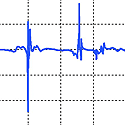A new power scheme for cardiac pacemakers turns to an unlikely source: vibrations from heartbeats themselves.Engineering researchers at the University of Michigan designed a device that harvests energy from the reverberation of heartbeats through the chest and converts it to electricity to run a pacemaker or an implanted defibrillator. These mini-medical machines send electrical signals to the heart to keep it beating in a healthy rhythm. By taking the place of the batteries that power them today, the new energy harvester could save patients from repeated surgeries. That’s the only way today to replace the batteries, which last five to 10 years.”The idea is to use ambient vibrations that are typically wasted and convert them to electrical energy,” said Amin Karami, a research fellow in the U-M Department of Aerospace Engineering. “If you put your hand on top of your heart, you can feel these vibrations all over your torso.”The researchers haven’t built a prototype yet, but they’ve made detailed blueprints and run simulations demonstrating that the concept would work. Here’s how: A hundredth-of-an-inch thin slice of a special “piezoelectric” ceramic material would essentially catch heartbeat vibrations and briefly expand in response. Piezoelectric materials’ claim to fame is that they can convert mechanical stress (which causes them to expand) into an electric voltage.Karami and his colleague Daniel Inman, chair of Aerospace Engineering at U-M, have precisely engineered the ceramic layer to a shape that can harvest vibrations across a broad range of frequencies. They also incorporated magnets, whose additional force field can drastically boost the electric signal that results from the vibrations.The new device could generate 10 microwatts of power, which is about eight times the amount a pacemaker needs to operate, Karami said. It always generates more energy than the pacemaker requires, and it performs at heart rates from 7 to 700 beats per minute. That’s well below and above the normal range.Karami and Inman originally designed the harvester for light unmanned airplanes, where it could generate power from wing vibrations.
A paper on the research, titled “Powering pacemakers from heartbeat vibrations using linear and nonlinear energy harvesters,” is published in the current print edition of Applied Physics Letters.
The research is funded by the National Institute of Standards and Technology and the Institute for Critical Technology and Applied Science at Virginia Tech.



